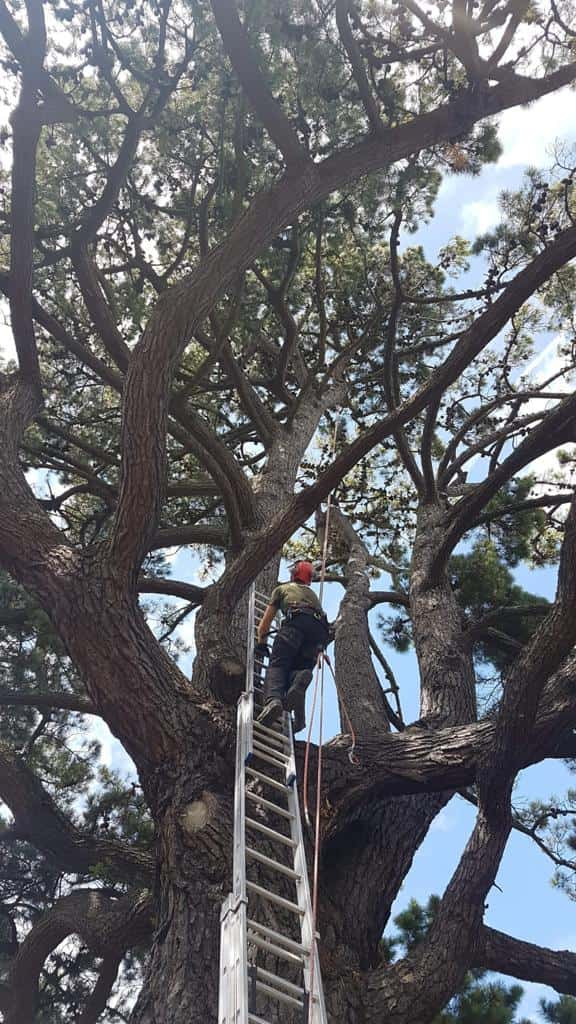Tree maintenance is more than simply cutting back branches — it’s about shaping, balancing, and preserving the health of each tree. Homeowners often hear terms like crown reduction, crown thinning, and crown lifting used interchangeably, yet these techniques have very different purposes and outcomes. Understanding the difference between them helps you make informed decisions about the best care for your trees. At EM Tree Surgery Marshfield, we use these techniques expertly to maintain healthy, attractive, and safe trees across Marshfield and the wider Gloucestershire area.
Understanding the Crown of a Tree
The crown is the upper part of a tree — including its branches and foliage — that forms the canopy. It plays a vital role in a tree’s health, supporting photosynthesis, structural balance, and stability. However, if a crown becomes too large, too dense, or too low, it can create problems such as shading, wind resistance, or potential hazards. Proper crown management techniques can address these issues while maintaining the tree’s natural form and vitality.
Crown Reduction: Controlling Size and Shape
Crown reduction is the process of selectively shortening the height and spread of a tree’s canopy. It’s typically used when a tree has grown too large for its surroundings or poses a risk to nearby buildings, roads, or power lines.
When to use crown reduction:
- To reduce overall height or spread without removing the tree entirely
- To prevent damage from high winds or heavy branches
- To balance uneven growth or restore shape after storm damage
- To manage trees in urban or confined spaces
A well-executed crown reduction removes branch tips while preserving the tree’s natural shape and structure. It should never be confused with topping, which involves harsh, indiscriminate cuts that can seriously weaken a tree. At EM Tree Surgery Marshfield, we ensure that all reductions are carried out with precision to encourage healthy regrowth and structural balance.
Crown Thinning: Improving Light and Air Flow
Crown thinning focuses on reducing the density of the canopy rather than its size. By selectively removing smaller branches throughout the crown, light can penetrate more evenly, and air can circulate freely.
The benefits of crown thinning include:
- Improved airflow, reducing the risk of fungal disease and dieback
- Enhanced light penetration, encouraging healthier growth beneath the tree
- Reduced wind resistance, helping the tree withstand storms more effectively
- Better aesthetics, maintaining a natural, balanced appearance
Crown thinning is particularly useful for mature trees with dense canopies that block sunlight or create excessive shade. EM Tree Surgery Marshfield performs thinning with great care, ensuring the tree’s structure remains strong while achieving the desired openness.
Crown Lifting: Creating Clearance and Space
Crown lifting involves removing the lower branches of a tree to raise the height of the canopy. This technique is especially beneficial where clearance is needed — for example, over roads, footpaths, driveways, or lawns.
Common reasons for crown lifting:
- To allow vehicles and pedestrians to pass safely beneath branches
- To improve visibility near entrances, signage, or lighting
- To open up views and allow more light into gardens or properties
- To prevent lower branches from obstructing buildings or fences
Crown lifting can transform both the practicality and appearance of a tree, giving it a taller, more elegant form. However, it’s important to maintain a balanced ratio between the crown and trunk — over-lifting can stress the tree and weaken its natural stability. The experienced arborists at EM Tree Surgery Marshfield assess each tree individually to achieve the right height and aesthetic without compromising health.
Choosing the Right Technique for Your Trees
Each crown management method serves a unique purpose, and the right approach depends on the tree’s condition, location, and growth pattern.
- Crown reduction is ideal when a tree has outgrown its space or threatens nearby structures.
- Crown thinning is best for improving light, airflow, and canopy health.
- Crown lifting suits situations where additional clearance or space is required.
Often, a combination of these techniques may be used to achieve the best results. EM Tree Surgery Marshfield provides professional assessments to determine which method will enhance both the safety and appearance of your trees while preserving their long-term wellbeing.
The Importance of Professional Tree Care
Crown work may seem straightforward, but it requires skill, precision, and an understanding of tree biology. Incorrect cuts can leave trees vulnerable to disease, decay, or structural imbalance. That’s why engaging professionals ensures the work is done correctly, safely, and in harmony with the tree’s natural growth patterns.
The team at EM Tree Surgery Marshfield uses advanced arboricultural techniques and modern equipment to carry out all crown operations efficiently and safely. Our goal is to ensure every tree continues to thrive while complementing its surroundings.
Conclusion
Crown reduction, crown thinning, and crown lifting each serve a specific and important role in tree management. When performed correctly, they enhance safety, promote healthy growth, and improve the visual appeal of your landscape. EM Tree Surgery Marshfield offers expert crown management services throughout Marshfield and Gloucestershire, helping property owners keep their trees strong, balanced, and beautiful year after year.
If your trees are looking overgrown, dense, or obstructive, contact EM Tree Surgery Marshfield for professional guidance and precision tree care tailored to your property’s needs.
Call us on: 01225 234 570
Click here to find out more about EM Tree Surgery Marshfield
Click here to complete our contact form and see how we can help with your tree needs.

